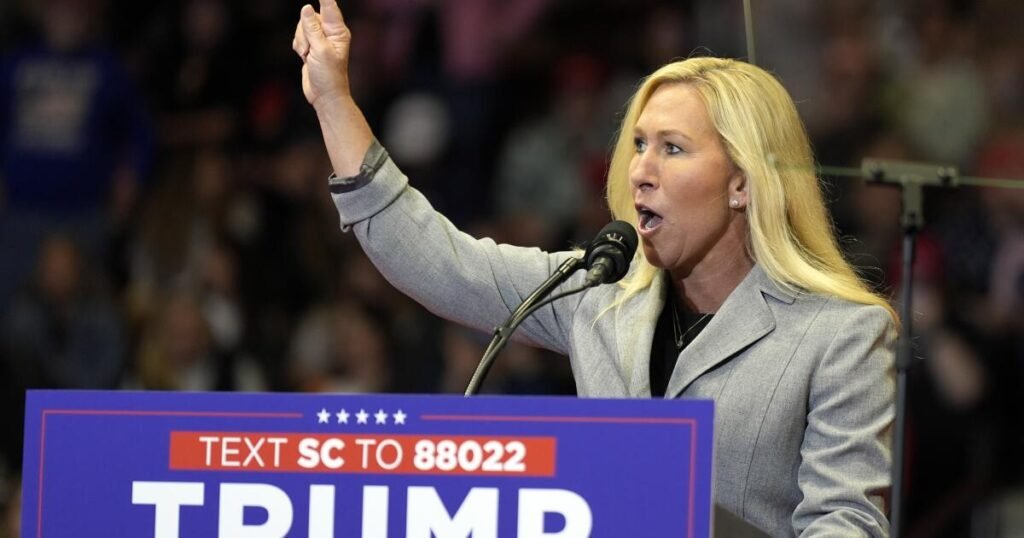The average U.S. House of Representatives district has approximately 590,000 people of voting age. How many of them do you expect to vote for their representatives in Congress? Half? quarter?
In 2020, the representative for Georgia's 14th Congressional District was effectively chosen by 43,813 people (just 8% of voters) who voted for the winner of the Republican primary. In 2018, the representative for New York's 14th District was chosen by 16,898 people (just 5% of voters) who voted for the winner of the Democratic primary. In these districts, one was dark red and the other dark blue, the only elections that mattered were the primaries of the leading parties.
Rep. Marjorie Taylor Greene (R-Ga.) and Rep. Alexandria Ocasio-Cortez (New York) have made major changes in the priorities and direction of their respective parties since their narrow initial general election victories. It has influenced and pushed both parties in ideologically extreme directions. And both MTG and AOC benefit from the prevailing partisan primary system, which strongly favors candidates who can appeal to a small but passionate base in lopsided districts.
Nonpartisan primaries like the one held Tuesday in California are rare exceptions and could point the way to political reform in the country.
Greene and Ocasio-Cortez are far from alone. According to a study by Unite America, only 8% of voters People across the country voted in the primaries that decided 83% of the House elections.
how? First, 83% of Congressional districts are considered “safe” for one party or the other, as are AOC and MTG. Some of this has to do with gerrymandering, but most districts are uncompetitive because of the widening partisan divide between urban areas (leaning Democrats) and rural areas (leaning Republicans).
You might think America has a two-party system, but in most parts of the country there are actually two one-party systems. In these areas, primaries are the only elections that matter.
Second, very few voters participate in primaries.That's because there are 22 states. Prevent independents from voting in primaries, according to a recent United States Association report, 23.5 million registered independents have been disenfranchised. And this problem is only going to get worse. The percentage of voters who are not registered with a major political party has increased by nearly 20% since 2010.
Primaries not only determine the winner of most elections, but they also give disproportionate power to small fringe factions. As a result, many elected officials no longer represent America and are less willing to work with other parties to solve problems.
Most of us take primaries for granted as a constant feature of politics that will always be with us. But that's not the case. California is currently one of four states that avoid partisan legislative elections.
The most powerful solution to the problem of partisan primaries is simply to abolish them. It is time for our electoral system to enter its next evolutionary phase to continue the tradition of periodic improvement since our nation's founding.
Eliminating partisan primaries means that all voters, regardless of party, should have the right to vote for any candidate in taxpayer-funded elections, and that all candidates must have the right to vote for any candidate in order to be elected. It upholds two important principles: that a candidate must receive a majority of votes; Reforming primaries can give all voters an equal voice and require all candidates to meet the same standards. Most importantly, we can reward, rather than punish, politicians who do what we elected them to do.
So far, the most common way to eliminate partisan primaries is to replace them with nonpartisan primaries, often referred to as “blanket primaries” or “jungle primaries.” In nonpartisan primaries, all voters participate in a single primary election, and all candidates are listed on the ballot with their party affiliation specified. The top winners, regardless of their party affiliation, advance to the general election and compete for majority support.
The path to major reform does not require amending federal law or the U.S. Constitution, and it can have a transformative impact even if it does not occur in all 50 states. In fact, I believe that if six more states abolished partisan primaries by 2026, bringing the total to 10, the system of Congress would improve dramatically. Voter-led campaigns are also underway in several states, including Colorado, Nevada, Idaho, Montana, and the South. Dakota could pass a bipartisan primary this fall through a ballot initiative.
This would free 20 senators and dozens of MPs from the political fringes and allow them to form a new coalition to actually govern major challenges that seem impossible to solve today. There will be a critical mass to start working on it.
Democracies that are dominated by extremes at the expense of the majority and that create division rather than solutions cannot survive indefinitely. And the self-reinforcing cycle of bipartisanship will not end on its own. We should judge proposals for change of direction not against perfection, but rather against the status quo.
Eliminating partisan primaries is not a panacea. But California and others have shown that this is a viable and effective means to begin reversing an increasingly harmful polarization.
The author is Nick Troiano. “Key solutions: rescuing democracy from the margins” and executive director of Unite America, a philanthropic venture fund that invests in bipartisan election reform.
















